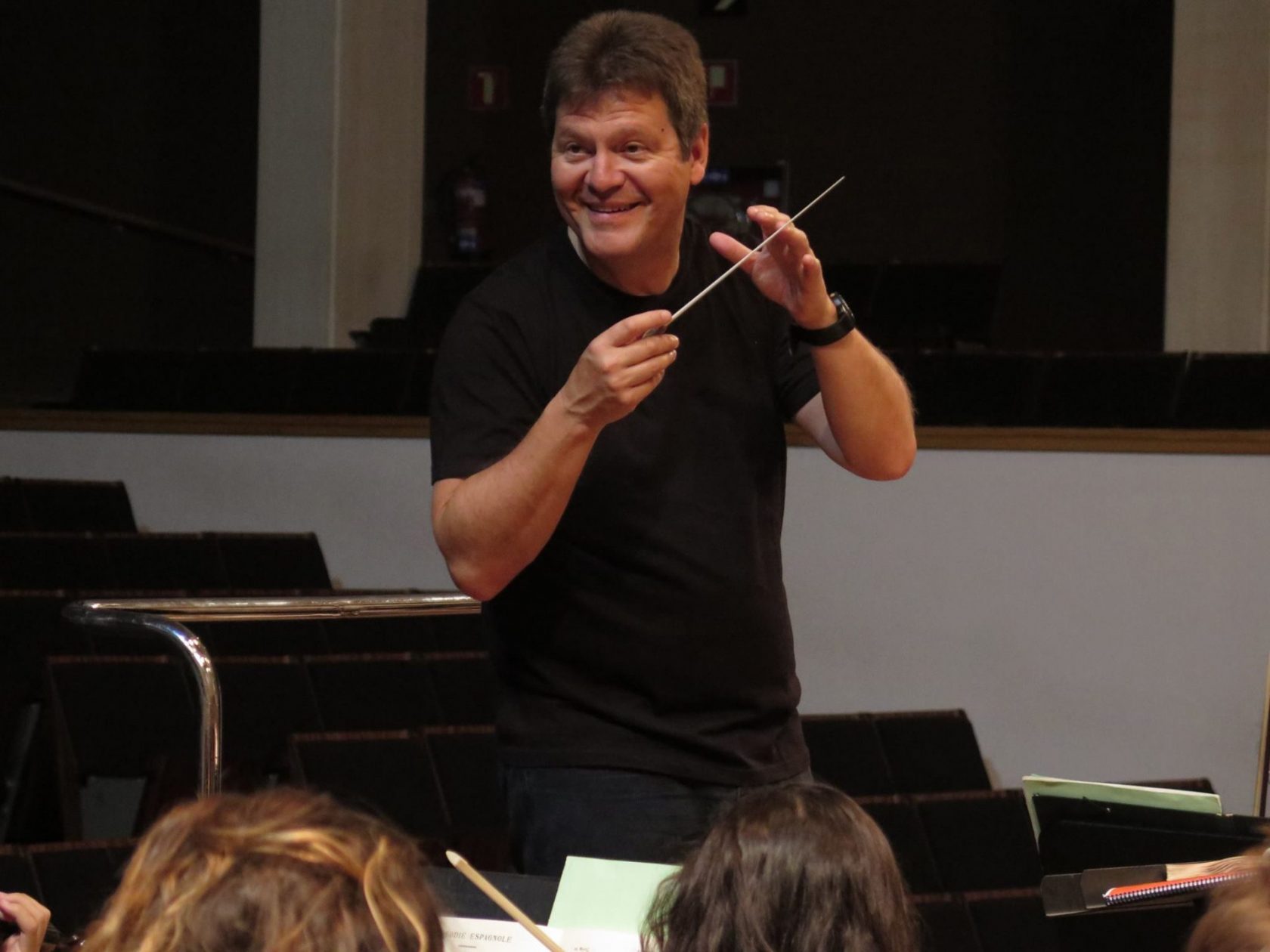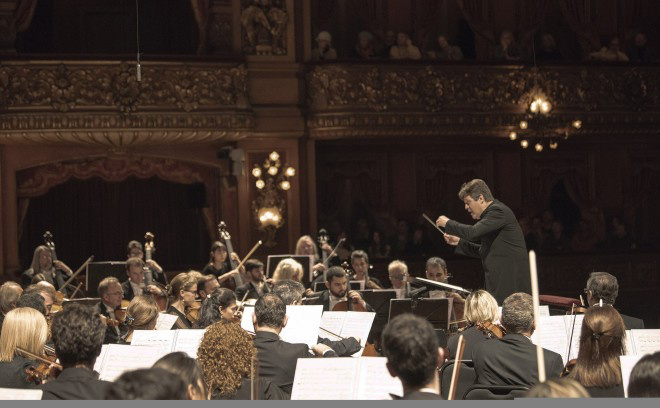
Hernández-Silva, excellent reviews at Teatro Colón
Hernández-Silva has recently achieved a great success at Teatro Colón after conducting two programs with the Buenos Aires Philharmonic Orchestra. Several reviews from Argentine and international media such as Clarín, Olyrix or De Paraíso para Usted highlight his detailed knowledge of the scores, technique, musicality, attention to detail and ability to accompany the soloists and get the best out of this prestigious ensemble. Here you can read some excerpts.

© Prensa Teatro Colon / Arnaldo Colombaroli
Temperament and personality on stage
Martha Cora Eliseth for De Paraíso para usted
The orchestra accompanied the pianist perfectly, under the masterful conducting of Hernández Silva. In the second of the three movements (Allegro scherzando), Filjak’s scherzo was masterful, with a depth and sound balance between orchestra and soloist as had not been heard at Teatro Colón for a while.
For the second part of the concert, Manuel Hernández Silva chose Dvorák’s Symphony No. 8 in G major, a piece within the usual repertoire of the Philharmonic, that has performed it on countless occasions. However, few performances have achieved the level of perfection and luminosity as last night’s under Hernández-Silva, which excelled for its outstanding interpretative quality and pure sound.
When there is rehearsal, discipline and effort, the Philharmonic shows its quality, sounding like a European orchestra. Manuel Hernández-Silva was an additional ingredient, contributing with his personality and talent to bring brightness and luminosity on a night worthy of the Colón. An authentic revelation on the stage of our biggest coliseum.

© Prensa Teatro Colon / Arnaldo Colombaroli
Berlioz Summer Nights at Teatro Colón’s (French) Winter Garden
Sébastien Vacelet for OLYRIX
The five pieces in Ma Mère l’Oye offer in their symphonic version a delicate, smooth and quilted panorama of this French garden, which promised to be rich in colors and nuances, and that the Buenos Aires orchestra managed to transmit under the beats of the sometimes magic baton of Hernández-Silva, who was very inspired and precise in his direction. The management of volumes and tempi is particularly careful (III, Laideronnette), with Manuel Hernández-Silva remaining very attentive to the execution of his gestural, flexible and precise indications. The fade-in of the harp, the triangle and then the violins in Les Entretiens de la Belle et de la Bête (IV) is a good example of coordination to create this impression of wonder that is the aesthetic link of Ma Mère l’Oye and finds in Le Jardin féérique (V) an enchanting conclusion.
Au Cimetière (V) gives us the opportunity to see text and melody intermingling in a piece that evokes a song “on the wings of music”, while the iridescent nuances of the orchestra, under the instructions on its conductor, manage effects that echo those of the verses.
The second part of the concert opens to this French garden a new horizon from across the Rhine: the performance of Schumann’s Symphony No. 2 further reinforces the already existing impression. The Buenos Aires Philharmonic Orchestra follows Manuel Hernández-Silva’s requests exactly, earning them all a big applause.
Conducted by Venezuelan Manuel Hernández-Silva, the orchestra excelled itself with works by Ravel, Schumann and Berlioz.
Federico Monjeau for CLARÍN
The conductor was also a success. Venezuelan Manuel Hernández-Silva replaced French Lionel Bringuier, absent for health reasons. Hernández-Silva was born in Caracas, graduated in Vienna and is currently principal conductor of the Malaga and Navarra orchestras. In Ravel’s suite and Berlioz’s songs he managed the orchestra to sound expressive and detailed even in the most surprising pianissimos. The ravelian goldsmithing counted in addition on impeccable soloist interventions, especially Pablo Saraví in the brief but significant violin solo at the end of the fourth movement, Les entretiens de la Belle et de la Bête.
And another success was the soloist Berlioz songs, the Irish mezzosoprano Tara Erraught, of beautiful timbre, fair intonation and an expresiveness at the same time nuanced and reserved. Hernández-Silva maintained a seamless balance between orchestra and soloist.
If conductor Hernández-Silva had been extremely reserved in the first two pieces of the program, in Schumann he reached peaks of great emotional intensity, without neglecting the continuity of form and details at the same time. The great performance of the soloists, especially the oboe, the clarinet and the bassoon, must also be here underlined.
